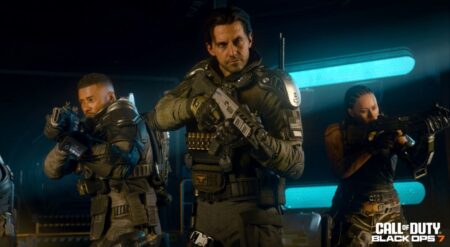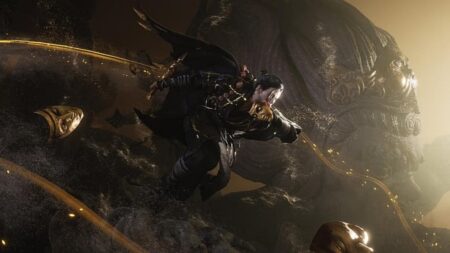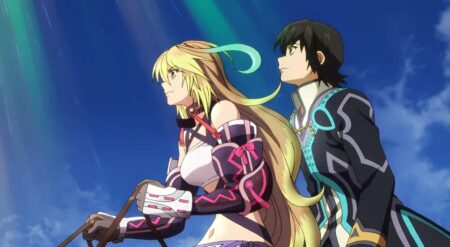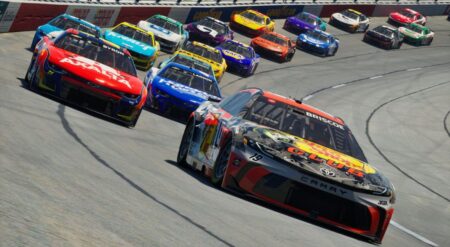Death Stranding 2: On the Beach, the new action-adventure game developed by Kojima Productions, builds on the foundation set by its predecessor. 2019’s Death Stranding was unlike anything around it—a game that cared more about the physical journey than the destination, with social systems that genuinely mattered. The sequel carries on these core values, with a fantastic story, expanded combat, and more of what made the original so special.
Death Stranding 2: On the Beach follows Sam as he continues to reconnect the post-apocalyptic world. He’s brought back in for one last job, as a recent discovery in the form of plate gates grants access to parts of the planet thought lost. These gates act as portals, bringing Sam from Mexico to Australia to reconnect Australia, just as he had America.
This time around, the story is much more personal. Sam’s journey here is dark and heavy, one filled with confronting his trauma, guilt, and loss. There’s still plenty of weird that only Kojima can deliver, but it’s also more nuanced and digestible than before.
Even when the third act goes wild and out there, the core heart of the story stays intact in a way that you can actually follow…mostly. The third act takes some wild and epic swings, cranking things up to a degree that only Kojima can. It’s still full of heart, but I’m already looking forward to the breakdown videos to make sense of it all.
Death Stranding 2: On the Beach is much less lonely this time.
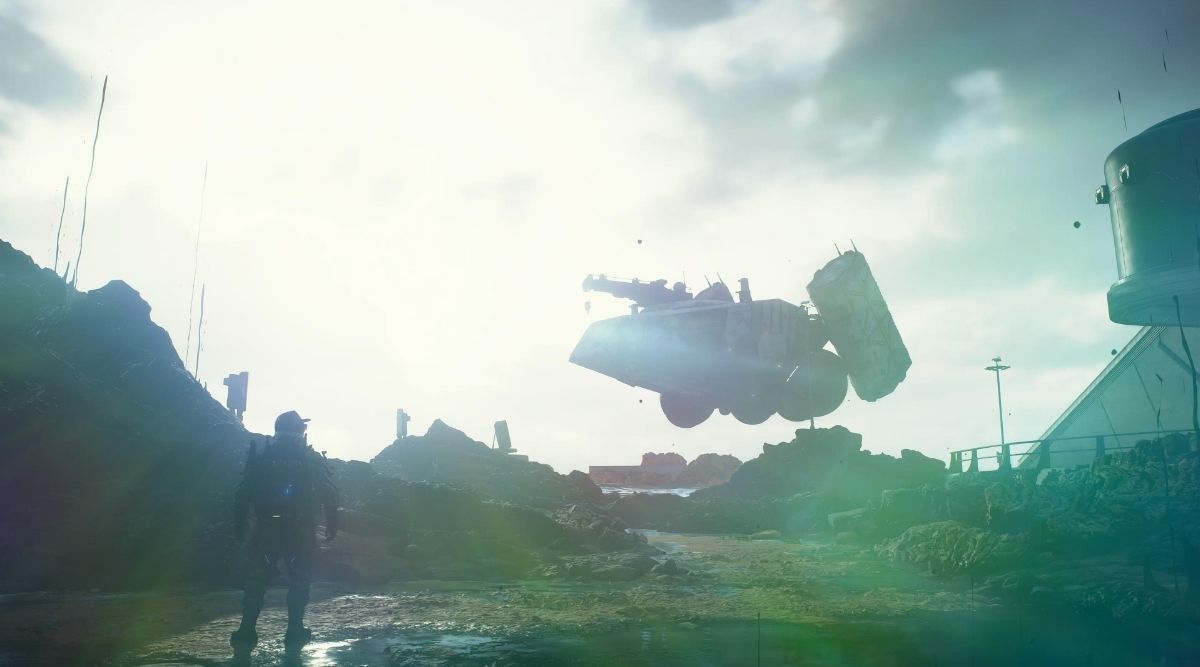
Death Stranding focused a lot on the themes of the strand, connections between people and community, versus the stick, violence, and control. Sam’s journey was built around learning to depend on others and care again, after locking himself away from those around him. Death Stranding 2: On the Beach revisits these themes, but in a different way.
This time, the game is more focused on the stick and the supposed need for it—a fall from connection towards violence. It’s a clever way to spin the themes we’ve come to expect, and it handles the narrative in a way that keeps you locked in and engaged, waiting to see where it goes next.
Death Stranding 2: On the Beach is much less lonely compared to the original. A lot of Death Stranding was Sam and Lou on the road alone, but with Death Stranding 2: On the Beach, the supporting cast is much more involved. In between missions, Sam goes back to the DHV Magellan, a giant ship that serves as home base. The Magellan’s crew starts small but grows bigger throughout the narrative, and getting to know the rest of the crew is fascinating.
Their constant presence makes the adventure in Death Stranding 2: On the Beach feel more like a group effort. From Tarman, the pilot of the ship who can ride the tar waves due to his hand being stuck on the other side, to Dollman, a being whose soul got trapped in a puppet, each one is memorable and endearing. It feels closer to something like Mass Effect, where the crew is as important as Sam himself.
The APAS enhancements act as an upgrade tree in Death Stranding 2.
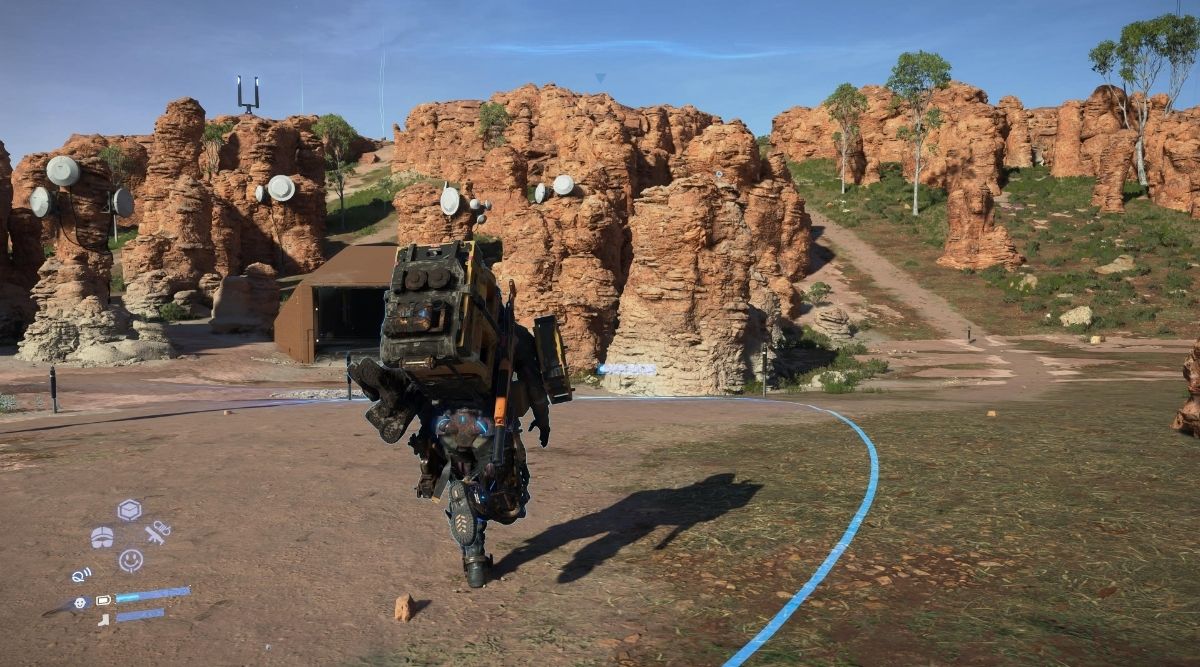
The DHV Magellan moves with the player as they bring new stations online. It acts as fast travel, being able to warp back to past stations unlocked, while also being a space for Sam to rest, shower, test weapons, and more. It makes the world a lot more accessible as you travel, making it a breeze to go back and complete orders you may have missed.
Death Stranding 2: On the Beach follows the same general structure that the original did. Sam has the option of taking on three types of orders. Main orders are story missions that advance the plot. Sub-orders can unlock new areas and bring new stations online, usually granting new equipment or benefits. Standard orders can provide experience and rank up Sam’s porter grade.
The porter grade is separated into five different traits, including stealth, combat, servicemanship, bridge link, and porter. They go up as you play, unlocking new APAS enhancements depending on how you choose to handle situations. Hiding from BTs and moving quietly increases your stealth, while building new bridges or contributing to roads may increase your servicemanship.
The APAS enhancements act as an upgrade tree of sorts, as you have a set amount of points you can spend to benefit Sam. These can range from improved bullets to a more efficient battery to even helping predict floods. The points can be reassigned as you take on orders, allowing for flexibility in approaching different missions depending on what’s needed for that specific order.
Vehicles are more important this time around.
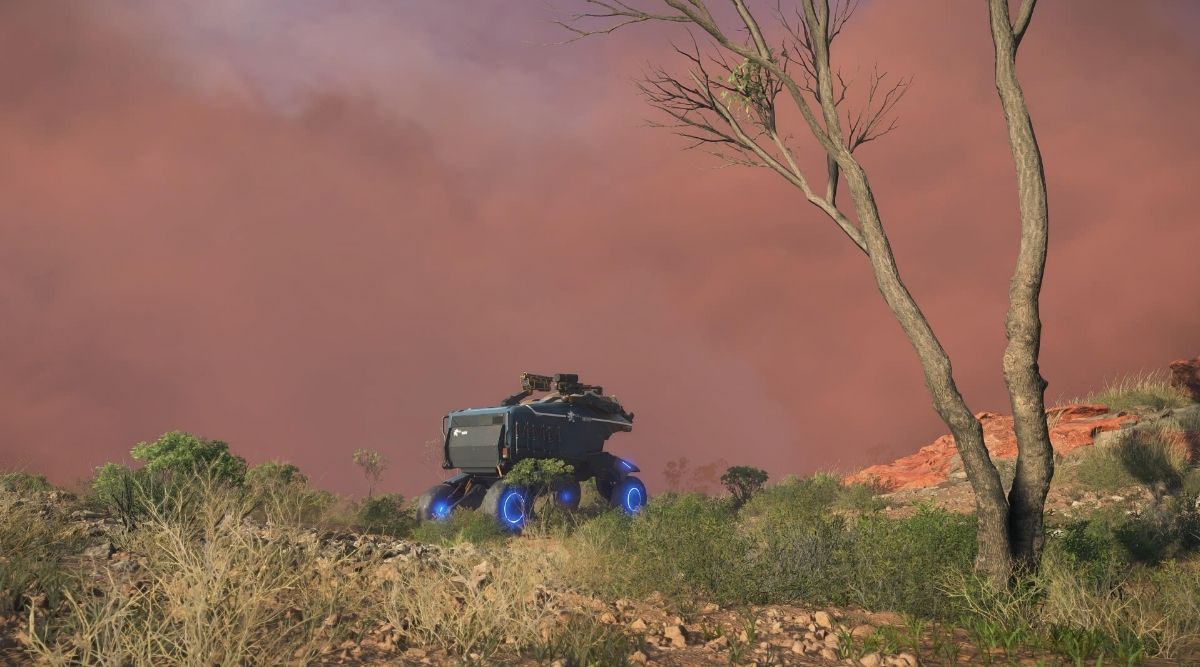
The bulk of the game is spent on these orders, walking across deserts, mountains, grasslands, and a whole lot more. While Australia isn’t entirely geographically accurate, it’s diverse and keeps the adventure varied as you travel. Each environment requires a different approach. Massive sandstorms plague the desert, dropping visibility and making it harder to move, while the air in the mountains is thinner and drops your stamina faster. Planning properly is integral to reaching your destination with your cargo intact.
Many of the tools from the original game return, including the ladder, exoskeletons, climbing anchors, and more. Each one is useful, as they make the journey across treacherous terrain more manageable. All are important, depending on the situation, and remain relevant even after you’ve used them for other players who come after.
Vehicles are also present, with the tri-cycle and off-roader both returning, along with some new fun additions. They feel almost more important this time around, as some of the distances you’ll trek across are large with sizeable amounts of cargo. It’s essential to keep track of your battery, distance to the next generator, or inventory to build another, as getting caught in a bad spot can make or break a delivery.
There’s more to worry about along the way, with both humans and BTs making the journey more difficult. BTs are as terrifying as ever, floating humanoid shadows with long tethers slinking through the air. Sneaking past them is an option, holding your breath in key moments to try and slide past.
BTs are terrifying as ever in Death Stranding 2.
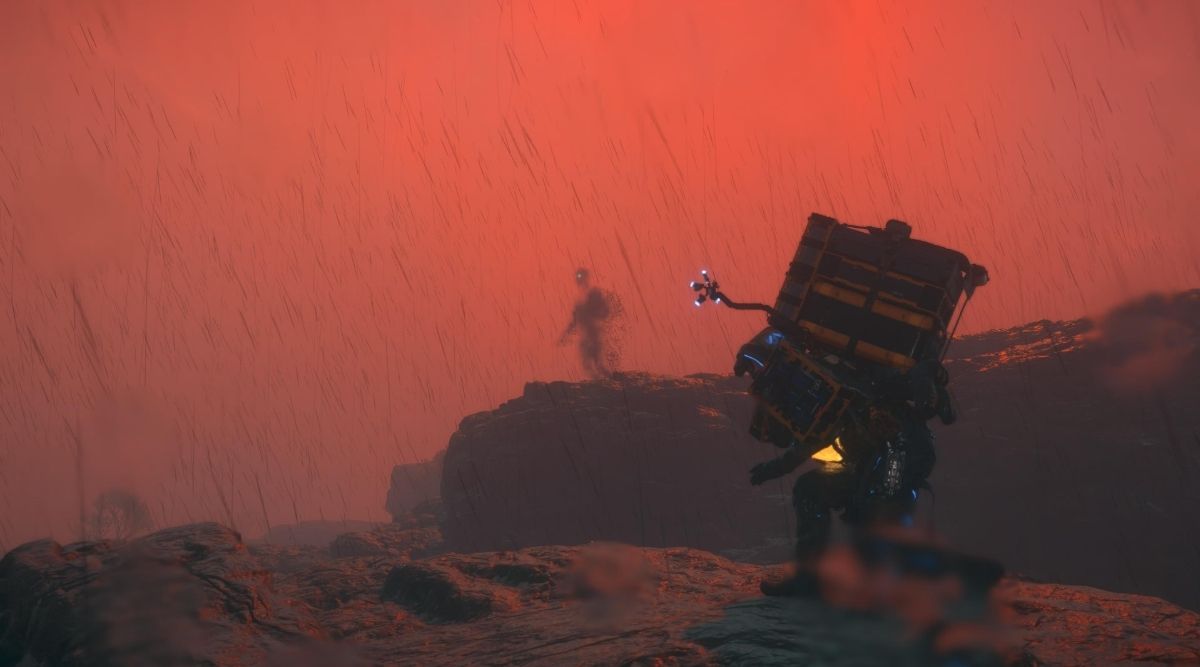
If you get caught or choose to start fighting, the BTs become immediately aggressive and come after you. Once an encounter with a BT starts, it can get bad quickly. From tearing off cargo, to mini boss fights, or at worst, causing a voidout—a massive explosion leaving a genuine crater in the environment. They’re not meant to be taken lightly and have lasting impressions.
Human enemies have camps along the way, and while they aren’t as supernaturally terrifying as the BTs, they pose no less of a threat. Snipers can deal damage quickly from a distance, laying down suppressive fire as melee attackers come at you. They can knock cargo off Sam’s back and destroy precious items, while also being able to knock power out of vehicles to slow you down more.
Luckily, as Death Stranding 2: On the Beach starts to embrace the stick, Sam’s arsenal is expanded here. There are more guns, including assault rifles, shotguns, and snipers, to fight off both BTs and humans. Various grenades, with one with a crazy cool effect that won’t be spoiled here, can genuinely change an encounter in a matter of seconds. Weapons aside, Sam’s physical melee capabilities are expanded. It’s always satisfying to land a flying knee on an enemy, sending them toppling.
You can still opt to stealth through or around these situations. There are more items to help distract and avert attention elsewhere, allowing for Sam to sneak up on enemies and take them out. Alternatively, players have the option of routing around these areas entirely, opting for more difficult terrain rather than a possible fight.
There’s a lot more combat in Death Stranding 2.
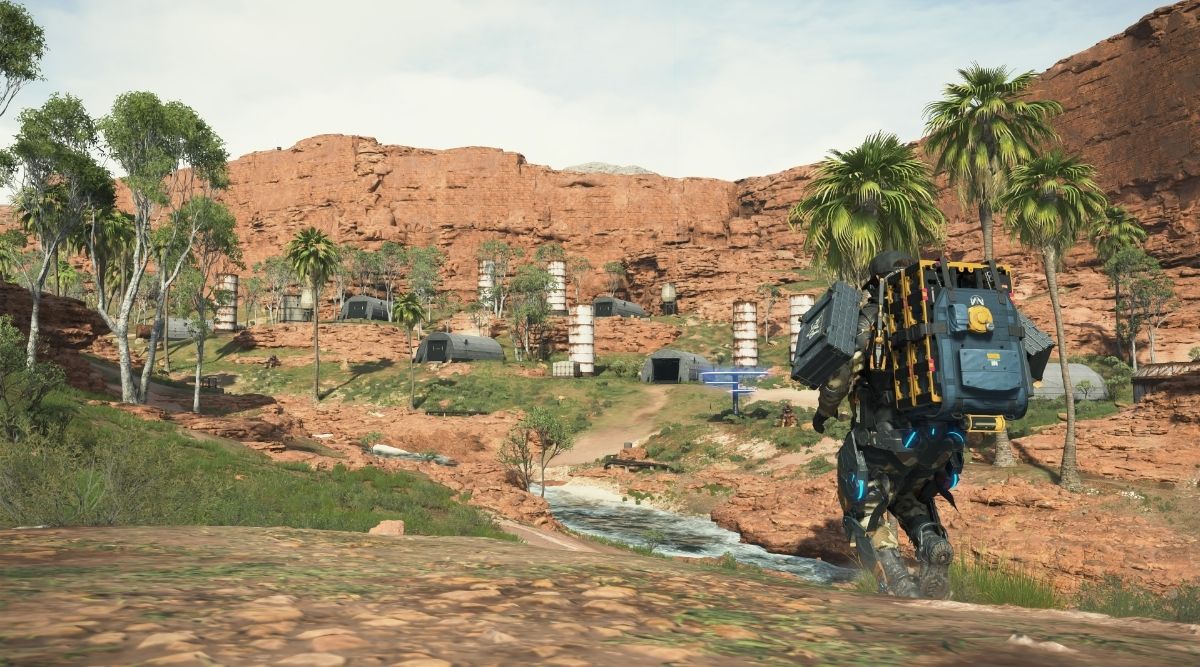
There’s a lot more combat in Death Stranding 2 than in the original, but one area that stays largely the same is the boss encounters. Periodically, throughout the story, Sam will need to face off against massive BTs. They’re big and epic fights, but they end up largely boiling down to the same loop. Empty every gun and grenade you have, run around collecting more, attack again, rinse and repeat.
With the floor covered in goo, even movement is difficult here. Sam’s not the lightest character to control, and dodging continues to feel clunky, amounting to Sam basically tossing himself sideways to try and avoid an attack. It lacks any form of precision, which was a complaint lodged at the original game as well. Unfortunately, there isn’t much iteration here, as even the bosses start to get familiar over the game’s runtime.
The social systems in Death Stranding were one of its best aspects, and that remains true in the sequel. As you use tools or leave vehicles in accessible locations, they can be used by other players in their own stories. You work together and contribute resources to build roads and make the path forward easier for not just yourself, but for others.
The feeling of community and contribution makes each action feel meaningful. I spent hours working on a zipline network through the mountains, hoping that others would use it to make their trips easier than mine had been. I used roads built by others, tossing out likes as thanks, as I brought resources to finish a section ahead.
There’s no other game that manages to capture this specific type of feeling. I’m the type of player who usually charges in headfirst and worries less about filling out a game’s systems, but with Death Stranding 2, I could feel the weight of my contributions to a greater whole.
When the servers went down for a few days during the review period, the resulting loneliness was palpable. I missed seeing the emotes and signs from players, signs of life and journey from others who had just traveled the same road. It’s one of the best parts of the experience.
Death Stranding 2: On the Beach is absolutely stunning.
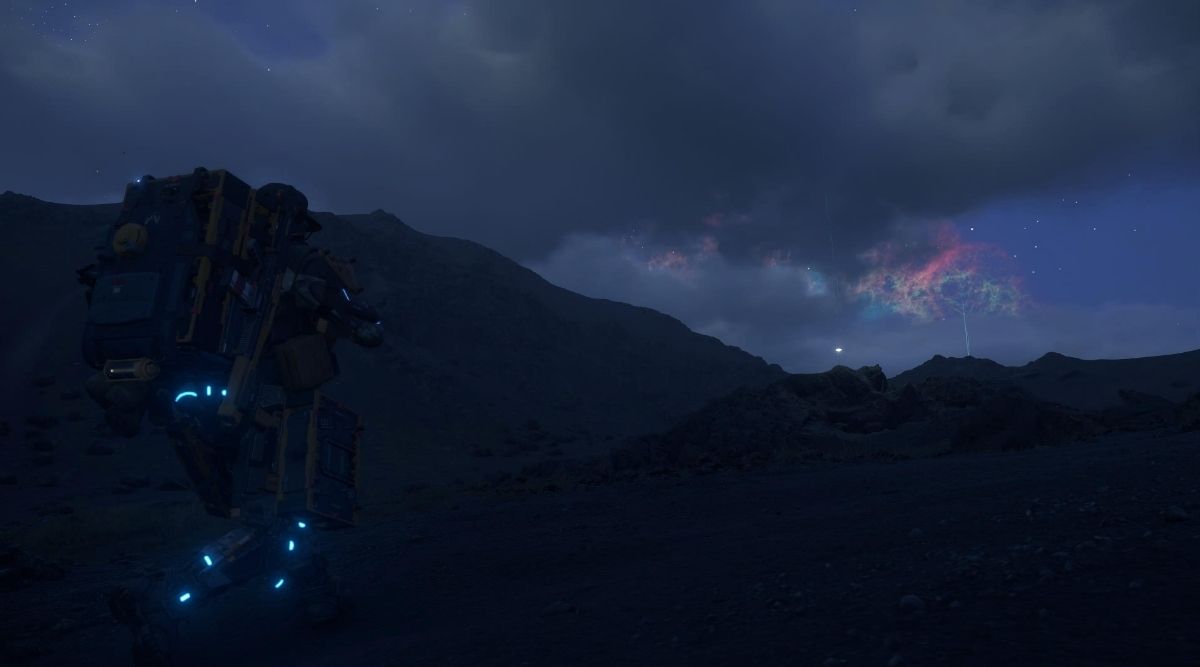
Graphically, Death Stranding 2: On the Beach is absolutely stunning. The Decima engine continues to be highly detailed, as the environments are rich and full of detail. Walking through the night offers a stunning display of stars overhead, while witnessing a massive sandstorm roll in towards you is harrowing. I used the photo mode often, capturing beautiful lookouts and vistas.
The music remains as excellent as it was in the original. Kojima and his team have a way of matching the licensed music to the landscape and mood, typically arriving as you finish a long, arduous mission. Gorgeous vocals, airy instrumentals, and indie bangers from the likes of Low Roar, CHVRCHES, and Woodkid are all here.
You unlock new tracks as you discover them, with a music player that allows you to listen to tracks at your leisure, even enabling playlist creation. The music was a highlight in Death Stranding, and the soundtrack to Death Stranding 2: On the Beach does not disappoint.
The DualSense controller also shines, bringing the player into the experience in a much more tactile way. Feeling the pitter patter of the rain and the different types of terrain due to the controller’s haptics grounds the experience in the real world. Small sounds echo out of the speaker, capturing the soundscape of the action on bringing it close. All of these disparate pieces coalesce to bring the player into the experience. It elevates the experience and transforms it.
Death Stranding 2: On the Beach is a stellar sequel that builds on the strong foundation laid by its predecessor. The story is human and personal, drawing the player in from its opening hours. The gameplay continues to be fantastic, as you feel every step in Sam’s journey thanks to the DualSense.
Combat is better and allows for more experimentation, even if the bosses are repetitive. It’s Kojima at his most Kojima, a visionary building a type of experience that only he can. Death Stranding 2: On the Beach is an adventure worth taking.
Death Stranding 2: On the Beach is available on June 26th on PlayStation 5, with early access starting on June 24th for those who pre-ordered the Deluxe and Collector’s editions.
Death Stranding 2: On the Beach
-
Rating - 9/109/10
TL;DR
It’s Kojima at his most Kojima, a visionary building a type of experience that only he can. Death Stranding 2: On the Beach is an adventure worth taking.




